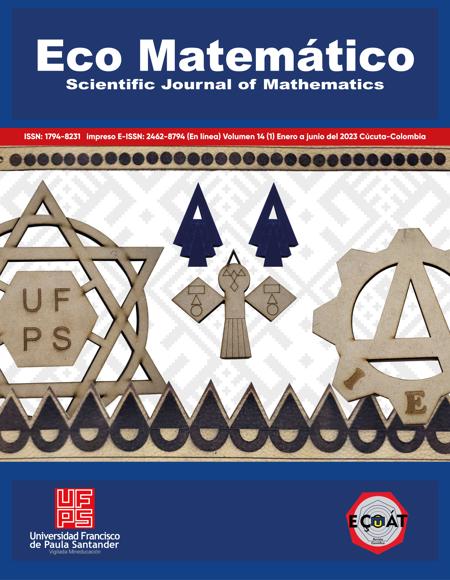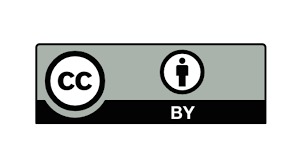The Pirie and Kieren Model for the mathematical understanding of the concept of trigonometric ratio
El Modelo de Pirie y Kieren para la comprensión matemática del concepto de razón trigonométrica
Main Article Content
The development of mathematical understanding has been one of the fundamental challenges in the processes of teaching and learning mathematics. This article presents a reflection of Pirie and Kieren's model as a didactic alternative for the understanding of the concept of trigonometric ratio, derived from a doctoral thesis study in the field of mathematics education that seeks to develop a learning scheme for this fundamental concept of mathematics within the framework of this model. For the fulfillment of this purpose, the methodological alternative of content analysis with a qualitative perspective was approached in order to find and describe understandings and meanings of the use of this model for the teaching and understanding of mathematical concepts. At a general level, it is concluded that, by means of the proposed model, it is possible to make visible and promote the evolution of the understanding of mathematical concepts; thanks to the characteristics of the theory that allow the cognitive mobilization and the study of the different representations within the process of understanding mathematical objects and concepts.
Downloads
Article Details
Arias, J., & Becerra, M. (2015). La comprensión del concepto de límite de una función en un punto en el marco de la teoría de Pirie y Kieren. Antioquia: Universidad de Antioquia.
Bardin, L. (1996). El análisis de contenido. Madrid: Akal.
Brousseau, G. (1986). Fundamentos y Métodos de la enseñanza de las matemáticas. Investigación en Matemáticas, 7(2), 33-11.
Brown, S. (2005). The trigonometric connections: Students’ understanding of sine and cosine. Illinois: Illinois State University.
Byers, P. (2010). Investigating trigonometric representations in the transition to college mathematics. College Quarterly, 13(2), 1-10.
Cerda, H. (2011). Los elementos de la investigación cómo reconocerlos, diseñarlos y construirlos. Bogotá, Colombia: Magisterio.
Creswell, J. (2013). Qualitative Inquiry and Research Design. Choosing among Five Traditions. California: Sage.
Dubinsky, E. (1991). Reflective Abstraction in Advanced Mathematical Thinking. Dordrecht: Kluwer. DOI: https://doi.org/10.1007/978-1-4612-3178-3_9
Gómez, C., & Okuda, M. (2018). Métodos en investigación cualitativa: triangulación. Revista Colombiana de Psiquiatría, 34(1), 118-124. https://www.redalyc.org/articulo.oa?id=80628403009
Hernández, R., Fernández, C., & Baptista, P. (2016). Metodología de la investigación. México D.F., México: McGraw Hill.
Jaime, A., & Gutiérrez, A. (1990). Una propuesta de fundamentación para la enseñanza de la geometría: El modelo de Van Hiele. Teoría y práctica en educación matemática. Sevilla: Alfar.
Londoño, D., Villa, D., & Morales, S. (2013). Comprensión del concepto de la derivada en su componente geométrica sobre la base del modelo de Pirie y Kieren. Medellín: Universidad de Medellín. https://d1wqtxts1xzle7.cloudfront.net/76436178/Londo_C3_B1o2013Comprensi_C3_B3n-libre.pdf?1639606919=&response-content-disposition=inline%3B+filename%3DComprension_del_concepto_de_la_derivada.pdf&Expires=1683930703&Signature=KiIrwPg6L63h2B~EN1-ksaTdnU1Dek
Londoño, R. (2011). La relación inversa entre cuadraturas y tangentes, en el marco de la teoría de Pirie y Kieren. Antioquia: Universidad de Antioquia.
Lyndon, S. (2000). The Role of Collecting in the Growth of Mathematical Understanding. Mathematics Education Research Journal, 12(2), 127-146. DOI: https://doi.org/10.1007/BF03217080
Martín, E. (2013). Significados puestos de manifiesto por estudiantes de Bachillerato respecto al concepto de razón trigonométrica. Estudio exploratorio. Universidad de Granada: Universidad de Granada.
Meel, D. (2003). Modelos y teorías de la comprensión matemática: Comparación de los modelos de Pirie y Kieren sobre el crecimiento de la comprensión matemática y la Teoría APOE. Relime, 6(3), 221-271.
Montiel, G. (2005). Estudio socioepistemológico de la razón trigonométrica. Mexico D.F: Instituto Politécnico Nacional.
Murillo, A. (2013). Caracterización de la comprensión del concepto de función en los estudiantes de grados noveno y once de los colegios públicos de La Virginia. Pereira: Universidad Tecnológica de Pereira. https://repositorio.utp.edu.co/server/api/core/bitstreams/4d367ed7-b8ce-4bcd-a17b-67d8172dd28f/content
Ñaupas, H., Mejía, E., Novoa, E., & Villagomez, A. (2014). Metodología de la investigación cuantitativa-cualitativa y redacción de la tesis. Bogotá , Colombia: Ediciones de la U.
Palella, S., & Martins, F. (2010). Metodología de la Investigación Cuantitativa. Caracas: FEDUPEL.
Pirie, S., & Kieren, T. (1989). A recursive theory of mathematical understanding. For the Learning of Mathematics, 9(3), 7-11.
Pirie, S., & Kieren, T. (1991). Folding back: Dynamics in the growth of mathematical understanding. Assissi, Italy: Fifteenth Meeting of the Psychology of Mathematics Education Conference.
Pirie, S., & Kieren, T. (1994). Growth in mathematical understanding: How can we characterise it and how can we represent it? Educational Studies in Mathematics, 26(2-3), 165-190. DOI: https://doi.org/10.1007/BF01273662
Rendón, R. (2011). La comprensión del concepto de continuidad en el marco de la teoría de Pirie y Kiere. Antioquia: Universidad de Antioquia.
Rendon, R. (2011). La comprensión del concepto de continuidad en el marco de la teoría de Pirie y Kieren. Medellín: Universidad de Antioquia.
Riba, C. (2017). El análisis de contenido en perspectiva cualitativa. UOC, Universitat Oberta de Catalunya.
Rueda, G. (2012). Aproximación a la enseñanza de las razones trigonométricas a través del trabajo experimental en matemáticas en el grado décimo. Santiago de Cali: Universidad del Valle. https://core.ac.uk/download/pdf/157765342.pdf
Santa, Z. (2011). La elipse como lugar geométrico a través de la geometría del doblado de papel en el contexto de Van Hiele. Antioquia: Universidad de Antioquia.
Sfard, A. (1991). On the dual nature of mathematical conceptions: reflections on processes and objects as different sides of the same coin. Educational Studies in Mathematics(22), 1-36. DOI: https://doi.org/10.1007/BF00302715
Sierpinska, A. (1992). The notion of function. The concept of function. Aspects of Epistemology and Pedagogy . EEUU: Mathematical Association of America.
Spink, P. (2007). Replanteando la investigación de campo: relatos y lugares. Fermentum. Revista Venezolana de Sociología y Antropología, 17(50), 561-574. https://doi.org/https://www.redalyc.org/pdf/705/70505006.pdf
Taylor, S. y R.C. Bogdan (1989). Introducción a los métodos cualitativos de investigación. Paidós, Barcelona.
Van Brummelen, G. (2009). The mathematics of the heavens and the earth. The early history of trigonometry. New Jersey, USA: : Princeton University Press. DOI: https://doi.org/10.1515/9781400833313
Van Hiele, P. (1986). Structure and Insight. A theory of mathematics educalion. Londres: Academic Press.
Vargas, G., & Gamboa, R. (2013). El modelo de Van Hiele y la enseñanza de la geometría. Revista Uniciencia, 27(1), 74-94.
Villa, J. (2011). La comprensión de la tasa de variación para una aproximación al concepto de derivada, un análisis desde la teoría de Pirie y Kieren. Antioquia: Universidad de Antioquia.
Weber, K. (2008). Teaching trigonometric functions: Lessons learned from research. Mathematics Teacher, 17(3), 91-112. DOI: https://doi.org/10.1007/BF03217423
Zapata, S., & Sucerquia, E. (2009). Módulo de aprendizaje para la comprensión del conceptos de serie de términos positivos. Antioquia: Universidad de Antioquia.







